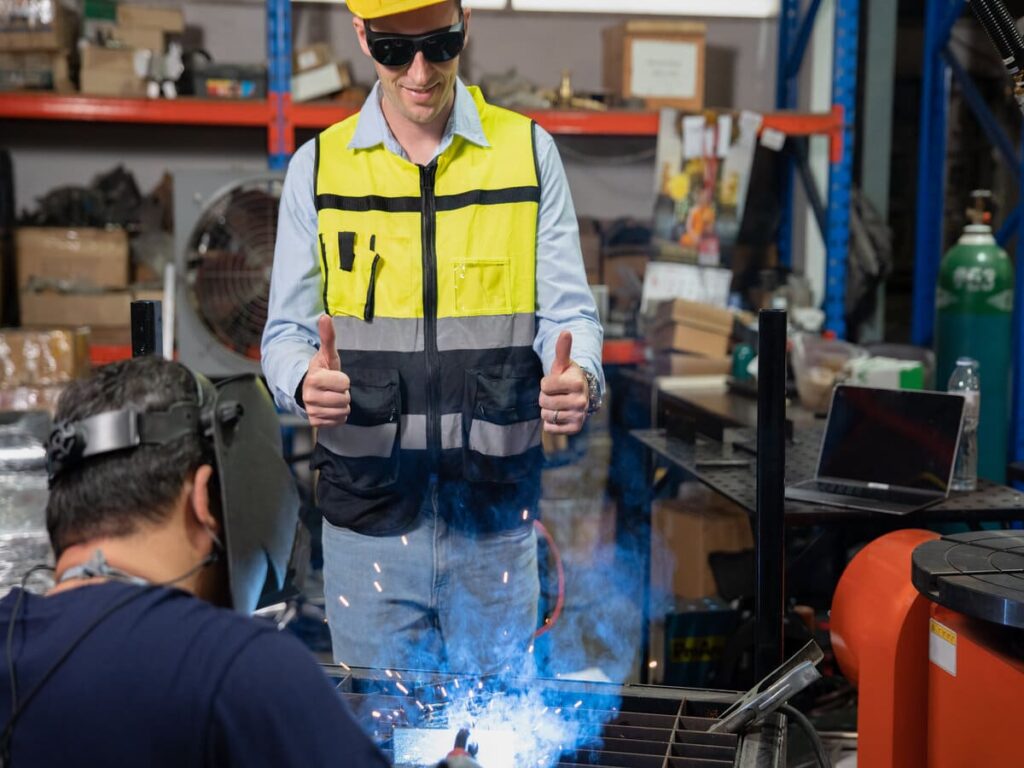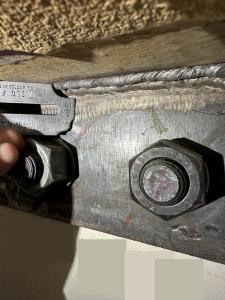Cutting-edge Techniques to Fillet Weld Assessment and Screening: Enhancing Weld Quality and Conformity Specifications
In the realm of welding, the high quality and honesty of fillet welds play a vital duty in making sure the architectural strength and integrity of various commercial elements. With the constant drive for boosted efficiency and conformity with rigid standards, the exploration of ingenious strategies to fillet weld inspection and testing has become necessary.
Advanced Non-Destructive Screening Approaches
Utilizing advanced innovations, advanced non-destructive testing approaches play an important duty in making certain the integrity and quality of fillet welds. These techniques, such as phased variety ultrasonic screening (PAUT) and magnetic fragment screening (MPT), deal thorough insights right into the weld's internal framework without creating any type of damages to the product. PAUT, for circumstances, makes use of multiple ultrasonic aspects to inspect the weld from different angles, providing an extensive visualization of prospective defects like lack of combination or fractures.
By utilizing these sophisticated non-destructive screening strategies, weld examiners can precisely examine the high quality of fillet welds, guaranteeing compliance with industry standards and policies. The capacity to identify problems early on not just enhances weld quality however also stops pricey rework or failings in structural honesty, underlining the importance of these ingenious screening techniques in welding evaluations.
Robotics and Automation in Evaluation
The combination of robotics and automation has changed the examination procedure for fillet welds, enhancing efficiency and precision in quality assessment. Robotics offer specific control and repeatability in evaluating welds, guaranteeing consistent and trusted outcomes. Automated systems can be configured to adhere to details assessment paths, making certain extensive insurance coverage of welds and reducing the risk of human error.
Robotic evaluation systems furnished with advanced sensors can discover and determine weld functions with high precision, providing comprehensive data for analysis. These systems can identify problems such as splits, lack of combination, and porosity, enabling timely restorative activities to be taken. In addition, robotics and automation allow for real-time information collection and analysis, giving prompt feedback to drivers and promoting fast decision-making processes.
In addition, using robotics and automation in fillet weld inspection boosts general productivity by decreasing inspection times and enhancing examination throughput. By improving the assessment process, suppliers can make certain weld high quality and conformity criteria are met successfully, eventually leading to set you back financial savings and enhanced item top quality.
Using Artificial Intelligence for Analysis
Expert system plays a critical function in improving the effectiveness and precision of analysis in fillet weld examination procedures. By using the power of AI, examiners can simplify the analysis of weld quality and conformity requirements, causing more exact and reputable results. AI formulas can quickly refine substantial amounts of information from weld examinations, spotting flaws or variances that might be challenging to understand the naked eye. This sophisticated modern technology enables real-time surveillance of weld high quality, enabling prompt corrective actions to be taken if any kind of issues are found.
Additionally, AI systems can gain from past inspection data, consistently enhancing their capacity to recognize prospective issues and variances in fillet welds. This flexible understanding ability enhances the total quality assurance procedure, reducing the chance of human error from this source and making sure that welds fulfill the needed requirements. By incorporating expert system into fillet weld evaluation, markets can accomplish greater degrees of efficiency, uniformity, and compliance in their assessment techniques.
Portable Devices for On-Site Assessment
 Enhancing field inspection efficiency, the fostering of portable devices revolutionizes on-site evaluation processes for fillet welds. These devices offer versatility and comfort, allowing inspectors to carry out thorough evaluations in numerous places, including challenging or remote environments. Mobile devices such as ultrasonic screening gadgets, magnetic fragment evaluation equipment, and electronic radiography systems offer real-time data and high-resolution imaging abilities, enabling quick decision-making and immediate feedback on weld high quality.
Enhancing field inspection efficiency, the fostering of portable devices revolutionizes on-site evaluation processes for fillet welds. These devices offer versatility and comfort, allowing inspectors to carry out thorough evaluations in numerous places, including challenging or remote environments. Mobile devices such as ultrasonic screening gadgets, magnetic fragment evaluation equipment, and electronic radiography systems offer real-time data and high-resolution imaging abilities, enabling quick decision-making and immediate feedback on weld high quality.One substantial benefit of portable devices is their capacity to simplify inspection procedures, decreasing downtime and enhancing general performance. Inspectors can easily move these tools to different task websites, eliminating the demand for moving hefty machinery or components to off-site centers. Furthermore, the portability of these tools advertises cost-effectiveness by reducing transport costs and speeding up assessment timelines.
Additionally, using mobile devices for on-site assessment promotes proactive high quality control measures, as assessors can without delay determine and deal with any potential welding issues or discrepancies. By including these ingenious technologies right into on-site inspection techniques, welding professionals can guarantee compliance with industry standards and boost weld top quality, inevitably leading to improved structural honesty and safety and security in numerous welding applications.
Assimilation of Data Management Systems
Having maximized on-site examination procedures through the utilization of mobile tools, the following phase entails the seamless combination of information administration systems to even more improve efficiency and information analysis capacities in fillet weld inspection and screening. Welding Inspection click to read more Racine. By incorporating information administration systems right into the examination procedure, companies can enhance data collection, storage space, and evaluation. This assimilation permits for real-time tracking of weld quality, immediate identification of issues, and prompt decision-making to remedy any concerns that might emerge throughout the examination process
The assimilation of data management systems allows seamless interaction between various stakeholders included in the assessment process, fostering cooperation and boosting total top quality control measures. Ultimately, the integration of data administration systems offers to elevate the requirements of fillet weld examination and screening, ensuring conformity with industry policies and boosting weld high quality.
Verdict
To conclude, ingenious techniques to fillet weld assessment and screening have dramatically enhanced weld quality and conformity requirements. Advanced non-destructive testing methods, robotics, automation, expert system, portable tools, and data monitoring systems have actually reinvented the means weld evaluations are conducted. By making use of these technologies, sectors can make sure that welds satisfy the needed high quality requirements and laws, inevitably improving overall performance and safety and security in welding processes.

By employing these sophisticated non-destructive screening website link strategies, weld inspectors can accurately evaluate the high quality of fillet welds, making certain conformity with market requirements and guidelines. Mobile tools such as ultrasonic testing gadgets, magnetic fragment inspection tools, and electronic radiography systems give real-time data and high-resolution imaging abilities, enabling fast decision-making and prompt comments on weld top quality.
Having optimized on-site inspection processes with the usage of portable devices, the following stage entails the smooth assimilation of data management systems to even more improve effectiveness and data evaluation capabilities in fillet weld examination and screening (Welding Inspection Racine). Eventually, the assimilation of information monitoring systems offers to boost the standards of fillet weld examination and testing, ensuring compliance with sector laws and boosting weld quality
 In verdict, innovative methods to fillet weld evaluation and testing have actually significantly improved weld top quality and compliance criteria.
In verdict, innovative methods to fillet weld evaluation and testing have actually significantly improved weld top quality and compliance criteria.